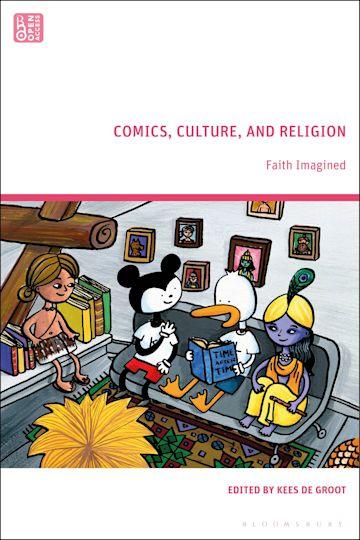Comics as sites of religion
A brand-new comic book museum in Groningen and in Noordwijk aan Zee, in-depth reviews of graphic novels in quality newspapers, successful film adaptations of American comics in cinemas, on Netflix (Preacher) and Disney+ (Moon Knight). The comic book medium is in the spotlight, thriving both on the Web and in book form, as "seventh art" and as entertainment. Less well known is its multifaceted relationship with religion. Sociologist of religion Kees de Groot, who previously revealed the Catholic background of Tintin, provides a systematic overview of this in an entertaining volume entitled Comics, Culture and Religion. Faith Imagined.
'While research on religion in movies has been going on for some time, this is the first publication to convincingly show not only how religions interact with comics, but also what comics do with religion, and how comics have significance for rituals, ethics and meaning. It becomes clear that you cannot avoid comics if you want to understand how religion functions in today's mediated world,' De Groot said. An extensive palette is covered, including Christianity, Islam, Judaism, Hinduism, Japanese religions and Zoroastrianism. But there is also attention to other depictions of "the sacred," as in Maus, the acclaimed graphic novel about memories of the Shoah.
Religion and comics intertwined
International scholars show in fourteen chapters how religion and comics are intertwined in Europe, how religion and comics are intertwined in Europe, India, Iran, Japan and the United States. The volume opens rather innocently with a content analysis of comics used in children's catechesis, but quickly switches gears to a feat of moral panic in the United States where a comic about Jesus and a superhero is cancelled via the Fox News site.
A review of the graphic novel Habibi argues that in this beautiful love story there is a rather convulsive attempt to put a kinder face on Islam. Based on field research in Japan, it shows what the mass visits to places featured in manga and anime (Japanese comics and animated films) has to do with traditional pilgrimage. Interviews with adult comic book readers during the pandemic show how comics have a place in everyday life. It also considers what we can learn from comics about religion and culture, and how comics can and cannot be used in education.

The volume 'Comics, Culture and Religion. Faith Imagined'
Note to the press
The volume 'Comics, Culture and Religion. Faith Imagined' has been published by Bloomsbury in book form and as an e-book in open access: Bloomsbury Collections - Comics, Culture, and Religion
For more information, please contact Prof. Kees de Groot c.n.degroot@tilburguniversity.edu.
